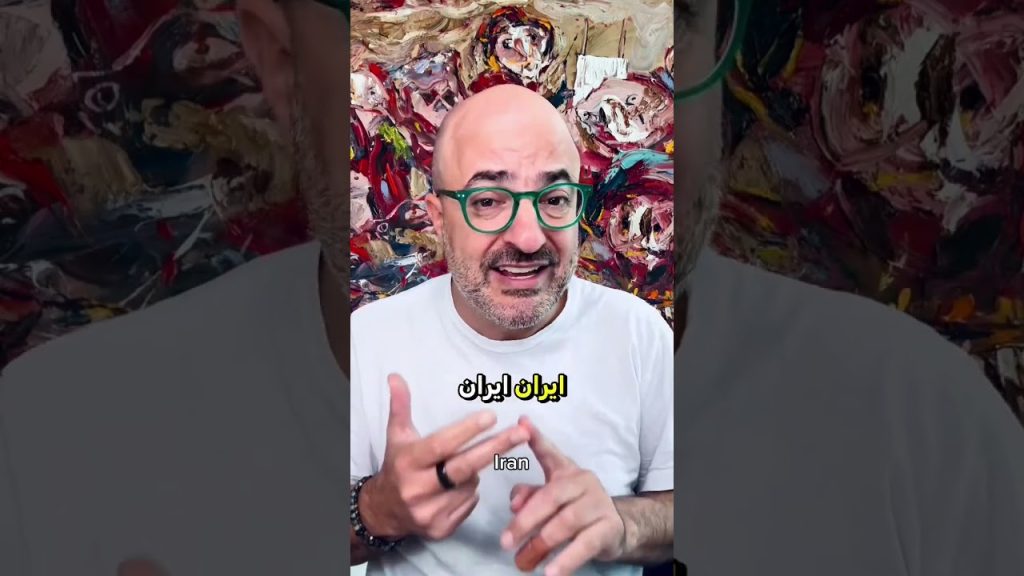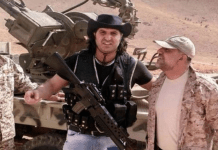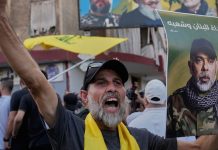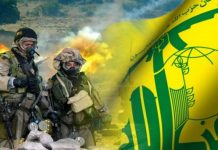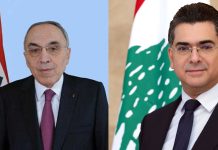Gaza Deal: A Funeral for a Bygone Era
Nadim Koteich/Asas Media/October 14/2025
(Free translation from Arabic by Elias Bejjani)
صفقة غزّة: مراسم دفنٍ لزمنٍ مضى
نديم قطيش/أساس ميديا/14 تشرين الأول/2025
تختتم اتّفاقيّة وقف إطلاق النار في غزّة، وهي تعلن عن نهاية الحرب أو فصولها الأكثر دمويّة، زمناً سياسيّاً امتدّ لأكثر من عشرين عاماً، في الشرق الأوسط. فليس ما نشهده هو نهاية الحرب، بل نهاية الحرب كلغة سياسيّة، أُسّس بها لأسطورة أنّ الميليشيات قادرة، من غير الدول، على رسم مستقبل المنطقة إلى أجل غير مسمّى.
لا تفاوض حركة حماس الآن من موقع من رسّخ رؤيته للصراع وأدواته، بل تبحث بين أنقاض العمران والسياسة عن سبل البقاء، بعد أن استُنزِفت وجُوِّفت، وتواجه مستقبلاً تملؤه أسئلة إعادة الإعمار، والحوكمة، والشرعيّة. بيد أنّ “حماس” ليست سوى الخاسر الأكثر وضوحاً في سياق انهيار أيديولوجيّ أوسع شمل عموم ما يُسمّى محور المقاومة.
هل انتهت إدارة إيران للحروب بالوكالة؟
تتّجه كلّ حرب بالوكالة تديرها إيران في المنطقة إلى النهاية ذاتها، حيث يجد شركاؤها أنفسهم وقد باتوا ظلالاً لوضعيّاتهم السابقة. رضخ “الحزب” قبل “حماس” لاتّفاق وقف إطلاق نار من دون أن يحقّق أيّاً من شروطه. فحرب غزّة استمرّت بعد أن أُجبر على الخروج منها، وهيكله العسكريّ دُمّر وقادته قُتلوا، والأرض التي لم تكن محتلّة قبل حرب الإسناد أصبحت محتلّة الآن، من دون أيّ أفق حقيقيّ للانسحاب منها ما لم توافق إسرائيل على أنّ شروط أمنها قد تحقّقت.
أمّا الحوثيون فسيجدون صعوبة في تبرير هجماتهم بعد أن استسلمت “حماس” لمنطق وقف إطلاق النار، بشروط إسرائيل الكاسحة، وأبرزها بقاء جيشها في غزّة. وفوق كلّ ذلك، خضعت إيران للامتحان، الذي من أجل تجنّبه، خلقت محور المقاومة، وهو الحرب المباشرة مع إسرائيل وأميركا، ليتبيّن أنّ نظريّة الردع الإيرانيّ ليست سوى ردع بالوكالة، لنظام لا يتحمّل الضربات المباشرة، ويدرك أنّ ثمن المواجهة الصريحة أعلى بكثير من إمكاناته.
ضمُّ هذه التطوّرات معاً، يشير إلى نهاية مشروع المقاومة برمّته، لا إلى مجرّد هزائم تكتيكيّة متفرّقة.
إيران وانتهاء الصّلاحيّة
لم يُسحق المشروع الإقليميّ الإيرانيّ عسكريّاً فقط، بل انتهت صلاحيّته النظريّة والعمليّة، بعد أن فشل في تحقيق وعده بنظام بديل، وسرديّة مضادّة للنموذج الغربيّ والخليجيّ. فالتدقيق في اتّفاق غزّة وبنوده العشرين، يفيد بأنّ المحور الفكريّ والسياسيّ الذي تدور حوله مداولات اليوم التالي بعد نهاية الحرب، هو فكر براغماتيّة الدولة، وليس تهويمات التشدّد اللاهوتيّ.
أوّلاً: من الملاحظات التي لم تحظَ بالتغطية الكافية خلال حرب غزّة هي أنّ العالم العربي لم ينفجر، كما دعا يحيى السنوار أو خالد مشعل. فكلّ التعاطف والسخط والاحتجاج، لم ينتج التعبئة الشاملة أو انتفاضة شعبيّة مستدامة، أرادها المحور مطيّة لتغيير التوازن السياسي في العالم العربي، لا في إسرائيل، بهدف هزّ الحكومات والدول العربيّة وإعادة رسم الحدود في البعض منها. هذا النضج السياسيّ الجماهيريّ، هو الترجمة العمليّة لحال التخمة التي وصلت إليها المنطقة بدولها وشعوبها بحيث انتقل المركز العاطفيّ والعقليّ للسياسة العربيّة من القضيّة الفلسطينيّة إلى التحدّيات الداخليّة لكلّ دولة على حدة. ليس تفصيلاً أنّ تظاهرات الشبيبة في المغرب مثلاً لم تحصل إلّا في سياق مطالبتهم بتحسين ظروف الصحّة والتعليم. وليس تفصيلاً أنّ سوريا تفاوض إسرائيل علناً حول ترتيبات الأمن المشترك في ذروة حرب غزّة. وليس تفصيلاً أن تحتفل أغلبيّة اللبنانيّين بخروج بلدهم من حرب الإسناد التي زُجّوا فيها وسط ترحيب ضمنيّ ومعلن بنتائج الحرب الإسرائيلية على “الحزب”. وليس تفصيلاً أن ينجح الأردن، وهو الحلقة الأضعف في فريق متلقّي تداعيات حرب غزّة، في تعزيز حصانة البلد السياسيّة والمجتمعيّة، في مواجهة التحريض اليوميّ على أمن الأردن ونظامه.
سرّعت مأساة غزّة هذا الانتقال النفسيّ، ليس لأنّ الرأي العامّ العربيّ تخلّى عن أهلها في محنتهم الأصعب، بل لأنّه تجاوز السياسات التي جعلت من غزّة قضيّة دائمة ومستمرّة.
ثانياً: تُنشئ اتّفاقيّة وقف إطلاق النار وصاية إقليميّة ودوليّة على غزّة، وربّما عموم القضيّة الفلسطينيّة، من قبل الولايات المتّحدة ودول الخليج ومصر وتركيا، لتصبح غزّة النموذج الأوّليّ لِما يمكن أن نُطلق عليه “السيادة الهجينة”: فلسطينيّة الاسم محليّاً، مدعومة ماليّاً من الخليج والمؤسّسات الدولية، مُدارة سياسيّاً من واشنطن، وتخضع لإشراف عمليّ من مجموعة من الفاعلين الإقليميّين ذوي المصالح المتضاربة، ولكن ذوي الحصص المشترَكة في الاستقرار. البديل عن الاحتلال ليس السيادة أو حلّ الدولتين، أقلّه الآن، بل تركيب سياسي تتعدّد فيه طبقات السيادة، وتتوزّع فيه السلطة، ويتمّ التفاوض فيه باستمرار على الشرعيّة. إنّ المعركة الحقيقيّة المقبلة ليست حول مَن يسيطر على غزّة، بل حول مَن يكتب قواعد هذا النظام الناشئ، وما إذا كان سيصبح نموذجاً لمرحلة ما بعد الصراع في اليمن أو لبنان أو حتّى سوريا وغيرها.
ثالثاً: للمرّة الأولى ستُستخدم إعادة الإعمار في منطقتنا كسلاح، من خلال توظيف العقود، والأموال، ومشاريع البنية التحتيّة، وآليّات الرقابة لإعادة هندسة الحمض النوويّ السياسيّ لغزّة وعموم القضيّة الفلسطينيّة. يُراد بهذا المعنى أن يتحوّل التحديث الاقتصاديّ والإعماريّ إلى أداة مصمَّمة لنزع السلاح الأيديولوجيّ، بحيث لا يُنفَق دولار واحد في مكان لا يؤدّي إلى إعادة ترميم الروح السياسيّة والقيميّة والفكريّة لغزّة والمنطقة قبل ترميم الحجر والبنى التحتيّة. فما نحن بإزائه الآن هو عمليّة بناء دولة معقّدة تتجاوز فيها عمليّة إعادة الإعمار بُعدها الإنسانيّ والخيريّ الذي ساد في الحروب الماضية، أكان في جولات غزّة السابقة أو بعد حرب لبنان 2006.
تنوّع السّرديّات
لن يكون مستغرباً أن يزعم كلّ فاعل إقليميّ في هذا الاختبار بأنّ صفقة غزّة تثبت صحّة وجهة نظره. ستؤطّرها قطر كدليل على نجاح الوساطة. وستقدّمها الإمارات كتأكيد على جدوى التطبيع. وستوظّفها السعوديّة لدعم التحوّلات والخيارات السياسيّة المستقبليّة للمملكة. وستصرّ إيران على أنّها برهنت على أنّ المقاومة لا يمكن إخمادها بالكامل. وستعلن تركيا أنّها تستحقّ الثناء على تدخّلها الإنسانيّ. وستصفها الولايات المتّحدة بأنّها انتصار للدبلوماسية غير التقليدية للترامبية السياسيّة. وستحتفل بها إسرائيل بوصفها علماً على التفوّق الإسرائيليّ الحاسم. سيكون الصراع المقبل صراعاً خطابيّاً في حرب السرديّات، بشأن مَن يكتب قصّة النصر، ومَن يعرِّف الهزيمة، ومَن يتصدّر أبوّة النظام الجديد. لكن ما لا خلاف عليه أنّ مأساة غزّة، وللمفارقة، ستتحوّل إلى مسقط رأس الواقعيّة السياسيّة العربيّة الجديدة، وستقدّم نموذجاً لكيفيّة إدارة مناطق ما بعد الصراع في عصر لم تعُد فيه اقتراحات الاحتلال الدائم أو السيادة الكاملة ممكنة دائماً. كتلة الأنقاض الأوضح في غزّة المدمّرة، هي أنقاض خطاب محور المقاومة وإجاباته القديمة. فالمقاومة ليست جوهر الهويّة، والتشدّد اللاهوتيّ بشأن أفكار الجهاد والنصرة ليس أداة أكيدة لصناعة المستقبل، والصراع الأبديّ ليس مصدراً للتماسك الوطنيّ. قد لا تكون صفقة غزّة هي نهاية الصراع. لكنّها بالتأكيد نهاية الكفاح المسلّح والميليشيات كمبدأ مُنظِّم للسياسة الإقليميّة.
Gaza Deal: A Funeral for a Bygone Era
Nadim Koteich/Asas Media/October 14/2025
(Free translation from Arabic by Elias Bejjani)
The ceasefire agreement in Gaza, as it announces the end of the war or its bloodiest chapters, concludes a political era in the Middle East that lasted for more than twenty years. What we are witnessing is not the end of the war, but the end of war as a political language, which was used to establish the myth that non-state militias are capable of shaping the region’s future indefinitely.
The Hamas movement is not negotiating now from the position of one who has solidified their vision for the conflict and its tools. Rather, it is searching among the rubble of architecture and politics for ways to survive, having been depleted and hollowed out, and is facing a future filled with questions of reconstruction, governance, and legitimacy. However, Hamas is only the most obvious loser in a broader ideological collapse that has encompassed the entirety of what is called the “Axis of Resistance.”
Has Iran’s Management of Proxy Wars Ended?
Every proxy war managed by Iran in the region heads toward the same end, where its partners find themselves becoming shadows of their former selves. Hizbullah, before Hamas, submitted to a ceasefire agreement without achieving any of its conditions. The Gaza war continued after it was forced out of it, its military structure was destroyed, and its leaders were killed. The land that was not occupied before the support war is now occupied, with no real prospect of withdrawal unless Israel agrees that its security conditions have been met.
As for the Houthis, they will find it difficult to justify their attacks after Hamas has surrendered to the logic of a ceasefire, under Israel’s sweeping conditions, most notably the continued presence of its army in Gaza. On top of all this, Iran was subjected to the test that it created the Axis of Resistance to avoid—direct war with Israel and America—only to find out that the Iranian deterrence theory is merely proxy deterrence, for a regime that cannot withstand direct blows and realizes that the price of open confrontation is far beyond its capabilities.
Putting these developments together points to the end of the resistance project as a whole, not just scattered tactical defeats.
Iran and the Expiration of Validity
The Iranian regional project has not only been crushed militarily, but its theoretical and practical validity has expired, having failed to fulfill its promise of an alternative system and a counter-narrative to the Western and Gulf models. A close examination of the Gaza agreement and its twenty clauses shows that the intellectual and political axis around which the deliberations for the day after the war revolve is the pragmatism of the state, not the vagaries of theological extremism.
First: One of the observations that has not received sufficient coverage during the Gaza war is that the Arab world did not explode, as Yahya Sinwar or Khaled Meshaal had called for. All the sympathy, indignation, and protests did not produce the comprehensive mobilization or a sustained popular uprising that the Axis wanted as a vehicle to change the political balance in the Arab world, not in Israel, with the aim of shaking Arab governments and states and redrawing the borders in some of them. This popular political maturity is the practical translation of the state of satiation the region has reached, with its states and peoples, whereby the emotional and mental center of Arab politics has shifted from the Palestinian cause to the internal challenges of each state individually. It is not a minor detail that youth demonstrations in Morocco, for example, only occurred in the context of demanding better health and education conditions. It is not a minor detail that Syria is openly negotiating with Israel over joint security arrangements at the height of the Gaza war. It is not a minor detail that the majority of Lebanese are celebrating their country’s exit from the support war they were dragged into, amid an implicit and open welcome for the results of the Israeli war on “Hizbullah.” It is not a minor detail that Jordan, the weakest link among the recipients of the repercussions of the Gaza war, succeeded in strengthening the country’s political and societal immunity in the face of daily incitement against Jordan’s security and regime.
The tragedy of Gaza accelerated this psychological transition, not because Arab public opinion abandoned its people in their hardest ordeal, but because it bypassed the policies that made Gaza a perpetual and continuous issue.
Second: The ceasefire agreement establishes regional and international custodianship over Gaza, and perhaps the entire Palestinian issue, by the United States, the Gulf States, Egypt, and Turkey. Gaza is set to become the prototype for what we might call “hybrid sovereignty”: Palestinian in name locally, financially supported by the Gulf and international institutions, politically managed from Washington, and subject to practical supervision by a group of regional actors with conflicting interests but shared stakes in stability. The alternative to occupation is not sovereignty or the two-state solution, at least for now, but a political structure with multiple layers of sovereignty, distributed authority, and continuous negotiation over legitimacy. The real upcoming battle is not over who controls Gaza, but over who writes the rules of this emerging order, and whether it will become a model for the post-conflict phase in Yemen, Lebanon, or even Syria and beyond.
Third: For the first time in our region, reconstruction will be used as a weapon, by employing contracts, funds, infrastructure projects, and monitoring mechanisms to re-engineer the political DNA of Gaza and the entire Palestinian issue. The intention here is for economic and architectural modernization to be transformed into a tool designed for ideological disarmament, so that not a single dollar is spent in a place that does not lead to the restoration of Gaza’s and the region’s political, value-based, and intellectual spirit before restoring stones and infrastructure. What we are facing now is a complex state-building process where the reconstruction process transcends its humanitarian and charitable dimension that prevailed in past wars, whether in previous rounds of Gaza or after the 2006 Lebanon war.
Diversity of Narratives
It will not be surprising for every regional actor in this test to claim that the Gaza deal proves the correctness of their point of view. Qatar will frame it as proof of successful mediation. The UAE will present it as confirmation of the feasibility of normalization. Saudi Arabia will employ it to support the Kingdom’s future political transformations and choices. Iran will insist that it demonstrated that resistance cannot be entirely extinguished. Turkey will declare that it deserves praise for its humanitarian intervention. The United States will describe it as a triumph for the political Trumpism’s unconventional diplomacy. And Israel will celebrate it as a sign of decisive Israeli superiority. The next conflict will be a rhetorical battle in a war of narratives, about who writes the story of victory, who defines defeat, and who takes the paternity of the new order.
But what is undisputed is that the tragedy of Gaza, ironically, will transform into the birthplace of the new Arab political realism, and will offer a model for how to manage post-conflict areas in an era where proposals for permanent occupation or full sovereignty are no longer always possible. The clearest block of rubble in destroyed Gaza is the rubble of the Axis of Resistance’s rhetoric and its old answers. Resistance is not the essence of identity, theological extremism about the ideas of Jihad and Nusra (support) is not a sure tool for manufacturing the future, and eternal conflict is not a source of national cohesion. The Gaza deal may not be the end of the conflict. But it is certainly the end of armed struggle and militias as an organizing principle for regional politics.

















